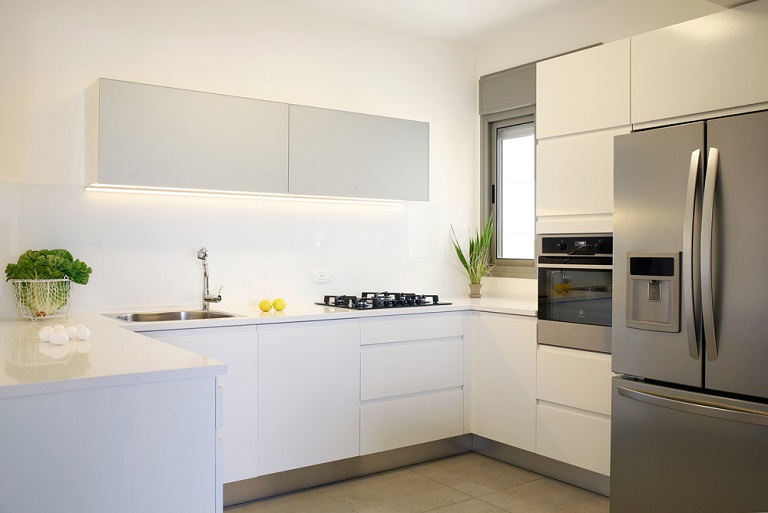
Top Five Commercial Interior Design Ideas | Tips by Architects and Designers
Top Five Commercial Interior Design Ideas
The summer, which every year brings with it the heat, humidity, jellyfish and watermelons, also signals the beginning
of the renovations season.
A moment before you start your renovation, we asked interior designer Dana Shaked- who specializes primarily in private
homes, small apartments and commercial spaces- to share what is important to know before you dive in, so that you can
complete your renovations and be pleased with the results.

Building a home is a long and complicated process and it is therefore important to plan as many small details as possible in advance.
Design: Dana Shaked
1. Define a time and budgetary framework. Perhaps this sounds trivial, but when you define your budget you also set your
priorities: decide what is more important and what is less crucial, what areas of the house will be focal points, and pay attention
to technical details; decisions regarding one shade of colour or another are less important at this stage.
In this way you create an easier framework to operate and properly work within, and keep things in perspective. This also
helps us to understand that at the end of the day these are just walls, and that our sanity, relationship and children are more
important. Dividing the space, the colour of the wall and bathroom tiles are just the background to the life we bring into the home.
Although it is important that there is compatibility, and that you plan in advance, the most important thing is to understand that
none of our choices are standalones- they will always be the background for the life we create in our home.
The kitchen is the background for the life we create in our home. Design: Dana Shaked
2. Start from the program. At the planning stage it is important to explore who is going to live in the home and to outline the
relevant technical details- where they throw their shoes, how they hang their towels, whether they watch television in the
morning or in the evening, and so forth. Once you've specified this you can move forward and divide the space and detail the
plumbing, electricity and lighting.
It is important to provide all items with a proper storage solution, and it is therefore preferable to define a detailed program
of the home’s inhabitants in advance.
3. Be as decisive as possible. One can weigh the different possibilities, contemplate and check, but the options are endless
and it is best to understand that at the end of the day you need to make a decision without disparaging anyone involved in
the renovations.
Furthermore, after a decision has been made, it is important to feel satisfied with it, regardless of what preceded it: just like
with kids, encouraging them to be satisfied with whatever they get.
The optinos and styles are endless. Try to focus on one direction and be decisive about it. Out of the Ceasarstone gallery
of kitchens.
4. Allow yourselves to go wild. As I also design commercial spaces, I explore unusual materials, colours, graphics and
various elements every day. People are afraid of them, but I think that dying of boredom at home is much worse than making
a bold choice you may regret and paint over a year later.
Draw inspiration from a vacation in Africa, use unusual materials in the right proportions, and don't be embarrassed to use
bold colours or crazy elements in the house. Just because your neighbours have a white brick wall doesn’t mean you have to
imitate them.
Don’t be afraid of bold colours or greys as opposed to white walls. Design: Dana Shaked.
5. Choose the right professionals and trust them. The professionals are those who implement the plans: without a good
carpenter, contactor or lighting expert, all of your planning isn’t worth much. It is important to let the professionals do the work.
Some customers try to pressure the professionals too much and thus miss their expertise, which causes declined willingness
and motivation. I believe that design should be carried out with love or not at all. 
Light fixtures as a significant element in a designed space. Design: Dana Shaked.